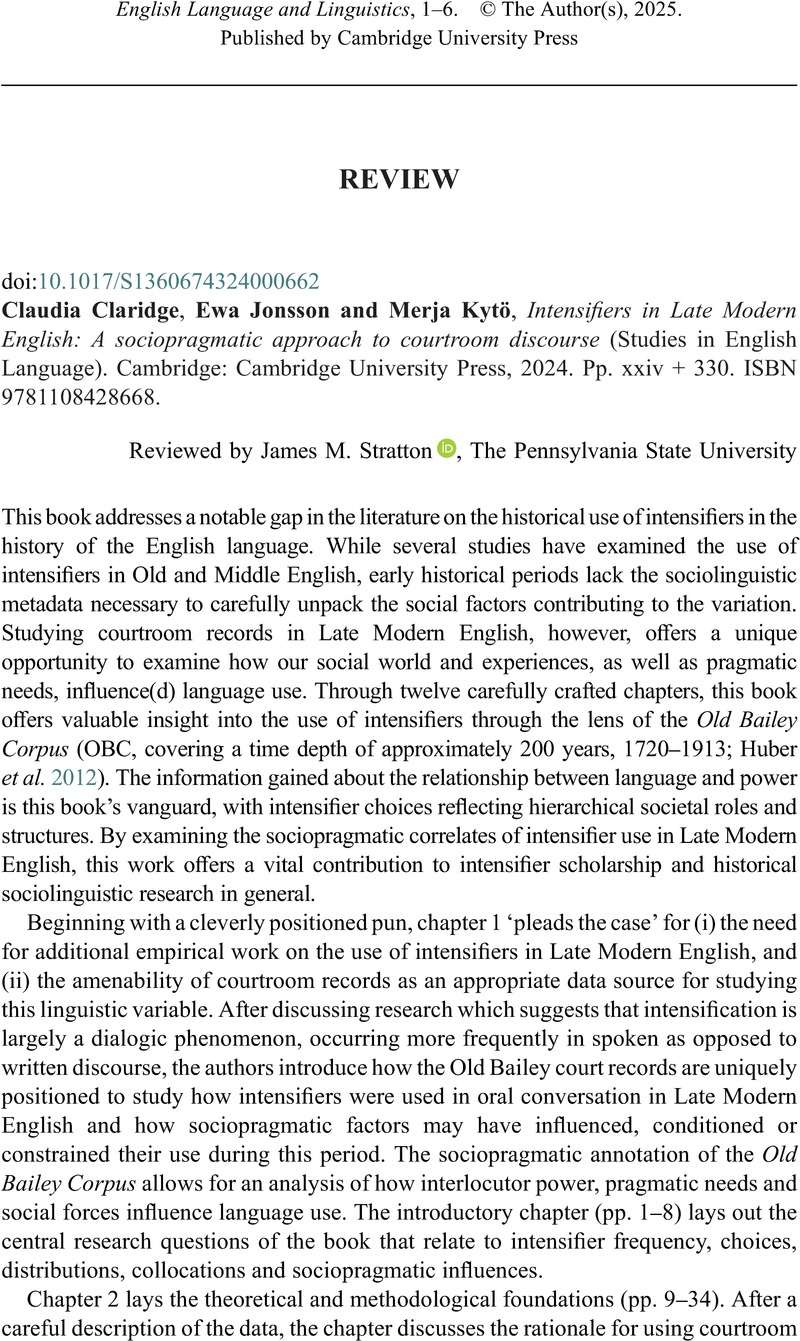Huber, Magnus,
Nissel, Magnus,
Maiwald, Patrick &
Widlitzki, Bianca.
2012.
The Old Bailey Corpus. Spoken English in the 18th and 19th centuries (OBC 0.1).
www1.uni-giessen.de/oldbaileycorpus/citation.html;
www1.uni-giessen.de/oldbaileycorpus/index.html (last accessed by the authors on 16 November 2020; URL no longer available).
Google Scholar 